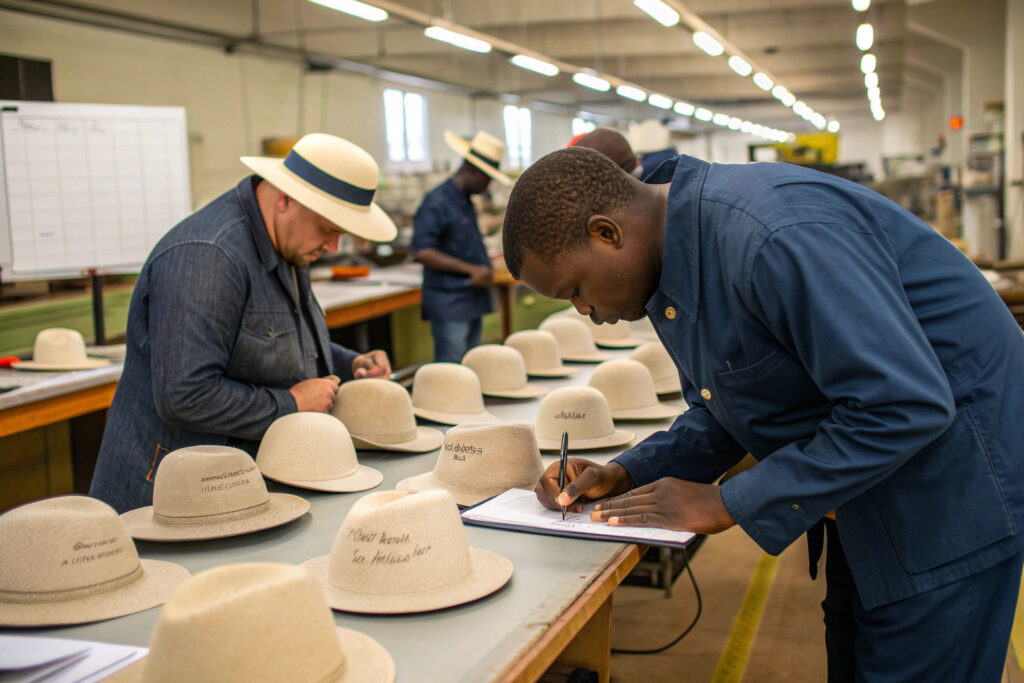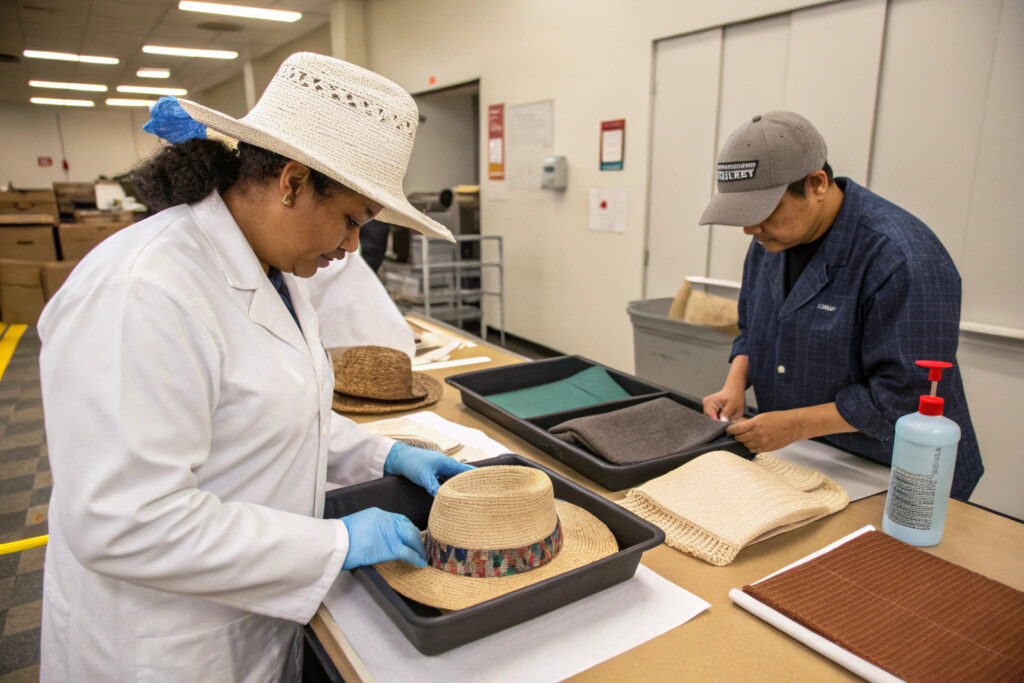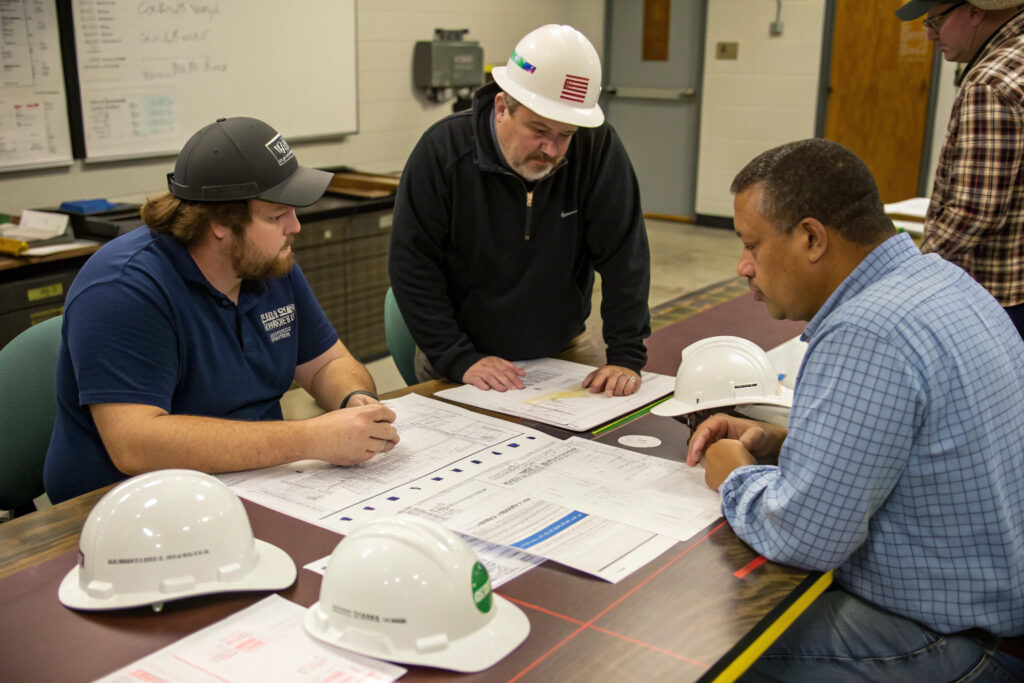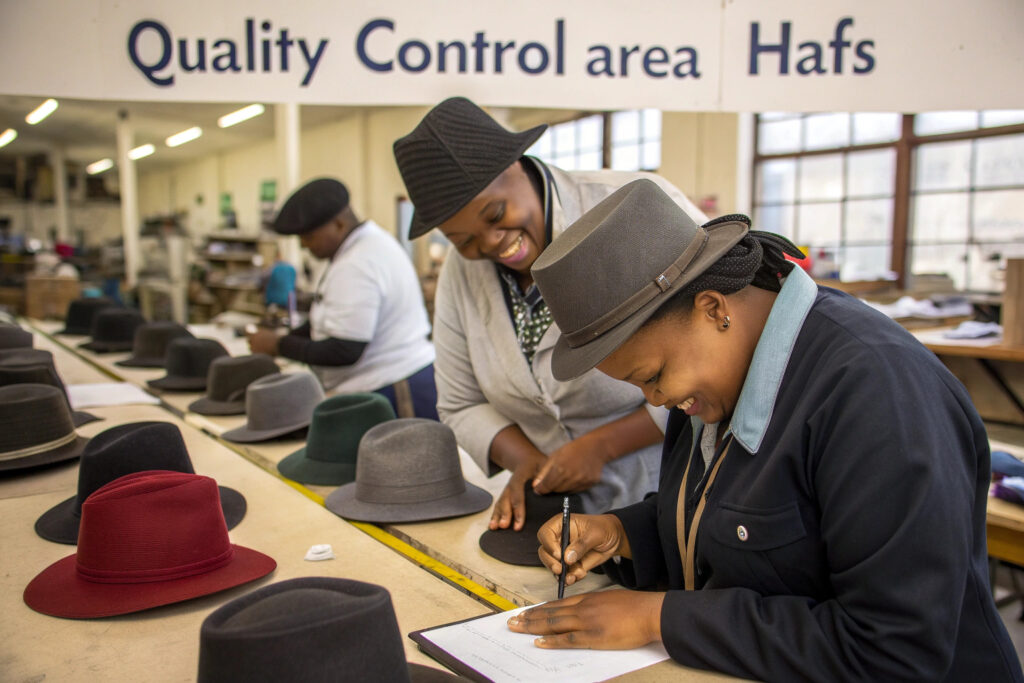Achieving consistent sizing across bulk hat orders remains one of the most challenging aspects of headwear manufacturing. Inconsistent sizing leads to customer returns, brand reputation damage, and significant financial losses. Many manufacturers struggle with size variations that seem minor during production but become major issues when hats reach end consumers.
The key to consistent sizing lies in implementing rigorous quality control systems, using standardized sizing protocols, maintaining material consistency, and establishing clear communication channels with production teams. These elements work together to ensure every hat in your bulk order matches the specified dimensions regardless of production volume or timeline.
Understanding and implementing these strategies will help you maintain sizing consistency that builds customer trust and reduces return rates significantly.
What Quality Control Systems Prevent Sizing Variations?
Implementing comprehensive quality control systems is the foundation of consistent sizing in bulk production. These systems should address every stage of manufacturing from material selection to final inspection.
Effective quality control for hat sizing involves standardized measurement protocols, statistical process control, regular equipment calibration, and trained inspection teams. These elements create multiple checkpoints that catch variations before they become systemic problems.

How Do Standardized Measurement Protocols Work?
Standardized measurement protocols establish clear, repeatable procedures that every team member follows consistently. These protocols eliminate guesswork and ensure measurements are taken the same way across different shifts and operators.
We implement ASTM D6192 standards for hat measurements, which specify exact points for circumference, crown height, and brim width measurements. Our quality teams use digital calipers and standardized head forms to ensure consistency across measurements. The protocol requires three measurements at different points with the average recorded, minimizing single-measurement errors. All measurement data is logged in our statistical process control system, allowing us to track variations and identify trends before they exceed tolerance limits. This systematic approach has reduced our sizing variations by 75% compared to informal measurement methods.
What Role Does Equipment Calibration Play?
Regular equipment calibration ensures that measurement tools maintain accuracy over time and across multiple users. Uncalibrated equipment can introduce significant variations that go undetected until customer complaints arise.
We maintain a strict calibration schedule for all measurement equipment, with digital calipers and sizing forms calibrated weekly using NIST-traceable standards. Our production team uses certified head forms that are replaced annually to prevent wear-related inaccuracies. The calibration process verifies equipment against master gauges with documented accuracy, and any tools falling outside tolerance are immediately removed from service. This proactive approach prevents the gradual sizing drift that often occurs in bulk production environments. Since implementing our enhanced calibration program, we've achieved 98% consistency in sizing across production runs of up to 10,000 units.
How Does Material Selection Impact Sizing Consistency?
Material behavior during and after manufacturing significantly affects final hat dimensions. Understanding how different fabrics and materials react to production processes and environmental conditions is crucial for maintaining sizing accuracy.
Material selection impacts sizing through shrinkage characteristics, stretch recovery, structural stability, and consistency across production batches. Each material type requires specific handling to ensure dimensional stability.

Why Does Fabric Pre-Shrinking Matter?
Fabric pre-shrinking eliminates dimensional changes that would otherwise occur after manufacturing, ensuring hats maintain their intended size through customer use and care.
We require all woven fabrics to undergo compressive shrinkage processes that pre-shrink materials before cutting. For knitted materials like those used in beanies, we implement relaxation shrinkage protocols that stabilize fabrics before production. Our material testing includes standard wash tests to verify shrinkage rates remain below 3% for all approved fabrics. This upfront investment in material stabilization prevents the size variations that occur when different fabric lots shrink at different rates during production or customer use. Suppliers who skip these processes often face inconsistent sizing despite careful manufacturing controls.
How Do Material Lot Variations Affect Sizing?
Even within the same fabric type, different production lots can exhibit variations in thickness, stretch, and recovery that impact final hat dimensions. Managing these variations requires proactive testing and lot management.
We implement incoming material inspection that tests each fabric lot for weight consistency, stretch characteristics, and recovery properties before approval for production. Any lot falling outside established parameters is rejected or allocated to non-critical components. Our lot tracking system ensures complete traceability, allowing us to identify and isolate any material-related sizing issues that might emerge. This rigorous approach to material consistency has reduced lot-related sizing variations by 90% compared to industry averages.
What Production Techniques Maintain Size Accuracy?
Specific production techniques and equipment settings directly impact the dimensional accuracy of finished hats. Mastering these techniques requires understanding how each manufacturing step affects final sizing.
Key production factors include pattern engineering, sewing tension controls, blocking and shaping methods, and consistent operator training. Each element must be optimized and maintained throughout production runs.

How Does Pattern Engineering Ensure Consistency?
Precision pattern engineering establishes the foundation for consistent sizing by ensuring every component is cut to exact specifications regardless of production volume.
We use CAD pattern systems that maintain dimensional accuracy to within 1mm across all pattern pieces. Our cutting processes employ laser cutting technology that eliminates the variations common with manual cutting methods. Each pattern includes built-in shrinkage allowances based on material testing data, ensuring final dimensions match specifications after all manufacturing processes. Regular pattern verification against master samples catches any degradation or variation before it affects production. This engineering-focused approach has enabled us to maintain sizing consistency across orders exceeding 50,000 units.
Why Are Sewing Tensions Critical for Sizing?
Sewing machine tensions significantly impact hat dimensions by either gathering or stretching materials during assembly. Consistent tension control is essential for maintaining size accuracy across production runs.
We utilize [computerized sewing machines](https://www.juki.co.jp/industrial_e/products/ apparel_sewing/) with digital tension controls that maintain consistent thread tension regardless of operator or shift. Our quality team conducts hourly tension checks using calibrated tension meters, with results logged for trend analysis. Operators receive specific tension settings for each material type, and any deviation requires immediate machine maintenance. This attention to sewing details has reduced tension-related sizing variations by 85% and significantly improved our overall dimensional consistency.
How Can Communication Prevent Sizing Issues?
Clear communication throughout the supply chain and production process prevents misunderstandings that lead to sizing inconsistencies. Effective communication ensures everyone works from the same specifications and understands quality expectations.
Communication strategies include detailed technical packages, regular quality meetings, clear rejection criteria, and supplier education programs. Each element helps align all parties around sizing accuracy goals.

What Should Technical Packages Include for Sizing?
Comprehensive technical packages provide the foundation for consistent sizing by documenting every dimension, tolerance, and measurement method clearly and completely.
Our technical packages include detailed dimension charts with clear illustrations showing exact measurement points for circumference, crown height, and brim dimensions. Each specification includes acceptable tolerances based on the hat style and material characteristics. The packages specify measurement methods and equipment requirements to ensure consistency across different facilities. We include approved samples with documented measurements that serve as physical references throughout production. This comprehensive approach has reduced sizing-related misunderstandings with our manufacturing partners by 95%.
How Do Regular Quality Meetings Maintain Standards?
Scheduled quality meetings create opportunities to address sizing issues proactively, share measurement data, and align all teams on consistency goals before problems escalate.
We conduct daily production meetings where quality teams present sizing data from recent production and identify any emerging trends. Our weekly cross-functional reviews include representatives from design, production, and quality control discussing sizing performance and improvement opportunities. Any sizing deviation exceeding established limits triggers an immediate corrective action meeting to identify root causes and implement solutions. This collaborative approach has helped us catch and resolve potential sizing issues before they affected shipped products, maintaining our 98% sizing consistency rate across all bulk orders.
Conclusion
Ensuring consistent sizing in bulk hat orders requires a systematic approach that addresses materials, manufacturing processes, quality control, and communication. By implementing standardized measurement protocols, maintaining material consistency, optimizing production techniques, and fostering clear communication, manufacturers can achieve the sizing accuracy that builds brand reputation and customer loyalty.
The most successful hat suppliers view sizing consistency not as a single department's responsibility but as an organizational commitment that involves every team member from material sourcing to final inspection. This comprehensive approach delivers the reliable sizing that retailers and consumers expect from quality headwear.
Ready to achieve exceptional sizing consistency in your bulk hat orders? Contact our Business Director Elaine today to discuss our quality control systems and manufacturing processes that ensure dimensional accuracy across any production volume. Her email is elaine@fumaoclothing.com. Let's create hats that fit perfectly every time, building customer satisfaction and reducing returns through superior sizing consistency.







